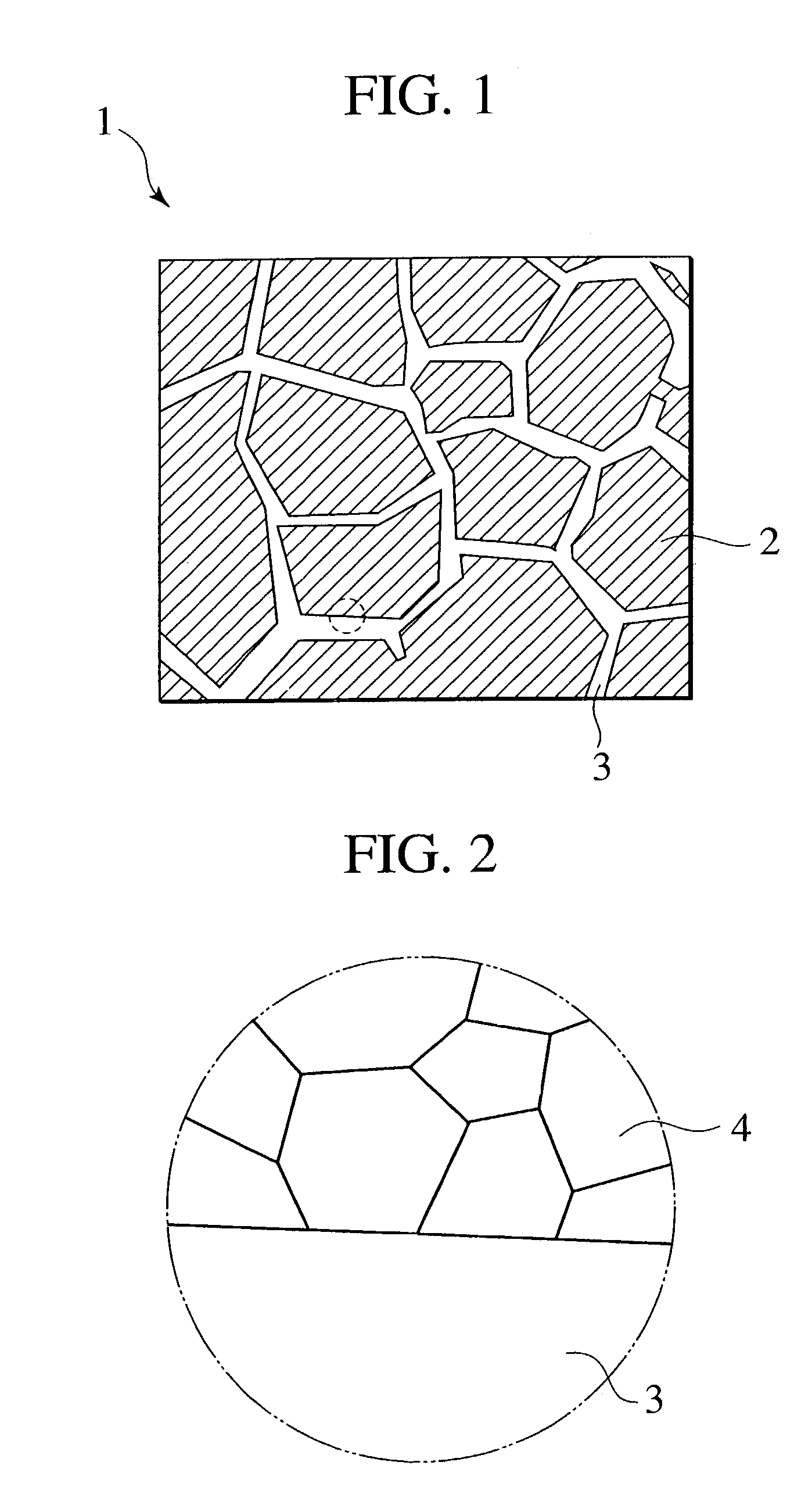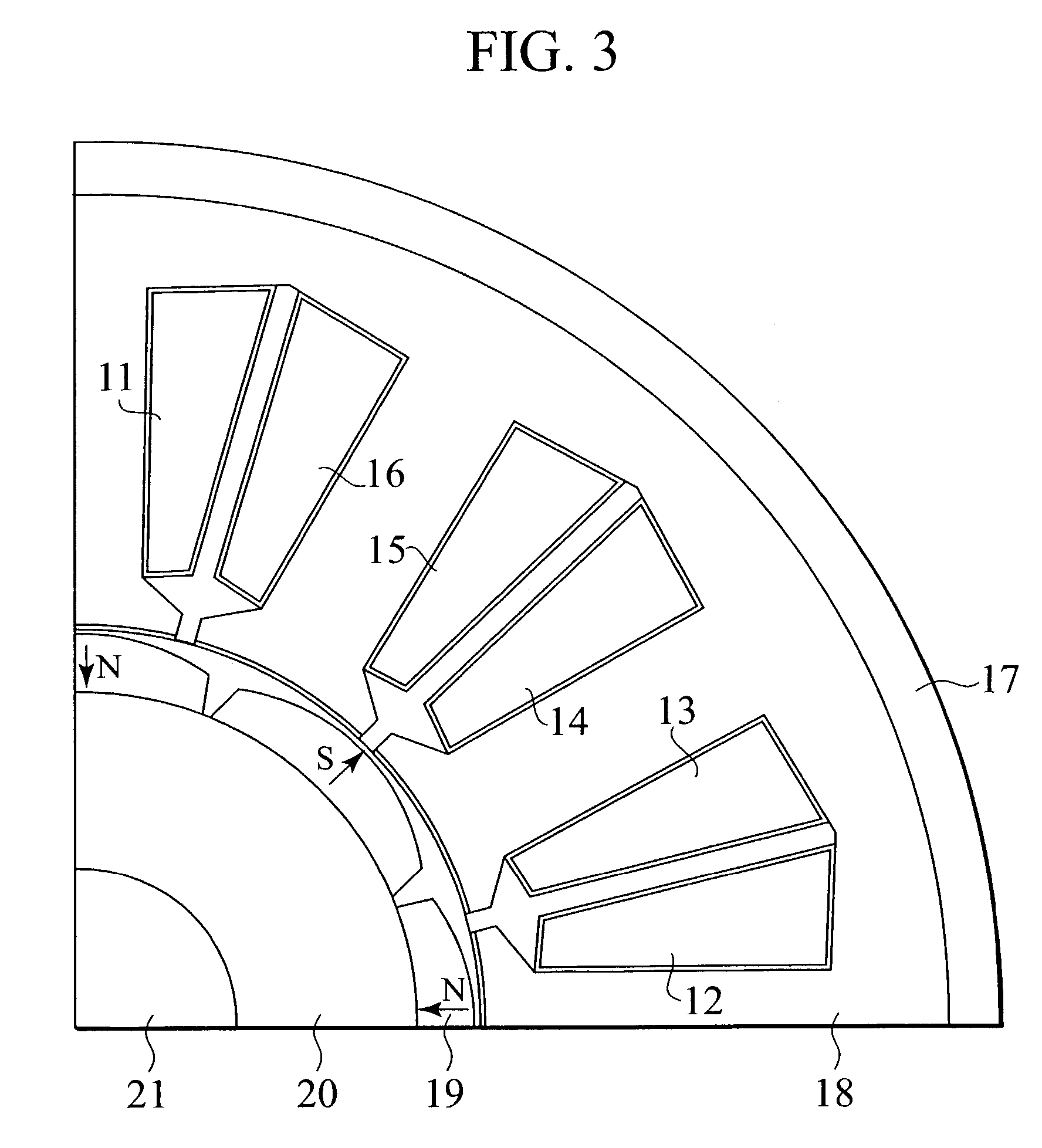Rare earth magnet, method for manufacturing the same, and motor using rare earth magnet
- Summary
- Abstract
- Description
- Claims
- Application Information
AI Technical Summary
Benefits of technology
Problems solved by technology
Method used
Image
Examples
example 1
[0054]Nd—Fe—B type anisotropic magnet powder prepared by means of the well-known HDDR method was used as the rare earth magnet powder. Concrete procedures for preparation were as follows. Firstly, an ingot having a composition defined as Nd12.6Fe62.6Co17.4B6.5Ga0.3Al0.5Zr0.1 was prepared. The ingot was retained at 1120° C. for 20 hours for homogenization. The homogenized ingot was then heated from a room temperature up to 500° C. and retained at the same temperature in a hydrogen atmosphere, and then heated again up to 850° C. and retained at the same temperature. Subsequently, the ingot was retained at 850° C. in vacuum, and then cooled down to obtain an alloy including a fine ferromagnetic recrystallization texture (crystal grains). The alloy was powdered in argon gas by means of a jaw crusher and a Braun mill and thereby formed into a rare earth magnetic powder having an average grain size of 300 μm or below.
[0055]Tb2O3 powder was used as the rare earth oxide powder. The average ...
example 2
[0060]A bulk rare earth magnet was obtained as similar to Example 1 except that Dy2O3 powder with an average grain size of about 0.5 μm was used as the rare earth oxide and that added amount of the Dy2O3 powder was set at 5 mass % of the total mass of the mixture. The density, the coercive force, the maximum energy product, and the electric resistivity of the obtained rare earth magnet were measured. The magnet density of the obtained rare earth magnet was 7.6×103 kg / m3, the coercive force was 0.96 MA / m, the maximum energy product was 0.23 MJ / m3, and the electric resistivity was 32.0 μΩm. The results are shown in Table 1.
[0061]The obtained rare earth magnet was an anisotropic Nd—Fe—B type rare earth magnet having an excellent maximum energy product and excellent electric resistivity.
example 3
[0062]A bulk rare earth magnet was obtained as similar to Example 1 except that Ho2O3 powder with an average grain size of about 0.9 μm was used as the rare earth oxide and that added amount of the DY2O3 powder was set at 6 mass % of the total mass of the mixture. The density, the coercive force, the maximum energy product, and the electric resistivity of the obtained rare earth magnet were measured. The magnet density of the obtained rare earth magnet was 7.6×103 kg / m3, the coercive force was 0.92 MA / m, the maximum energy product was 0.21 MJ / m3, and the electric resistivity was 31.0 μΩm. The results are shown in Table 1.
[0063]The obtained rare earth magnet was an anisotropic Nd—Fe—B type rare earth magnet having an excellent maximum energy product and excellent electric resistivity.
PUM
| Property | Measurement | Unit |
|---|---|---|
| Temperature | aaaaa | aaaaa |
| Temperature | aaaaa | aaaaa |
| Percent by mass | aaaaa | aaaaa |
Abstract
Description
Claims
Application Information
 Login to View More
Login to View More - R&D
- Intellectual Property
- Life Sciences
- Materials
- Tech Scout
- Unparalleled Data Quality
- Higher Quality Content
- 60% Fewer Hallucinations
Browse by: Latest US Patents, China's latest patents, Technical Efficacy Thesaurus, Application Domain, Technology Topic, Popular Technical Reports.
© 2025 PatSnap. All rights reserved.Legal|Privacy policy|Modern Slavery Act Transparency Statement|Sitemap|About US| Contact US: help@patsnap.com



